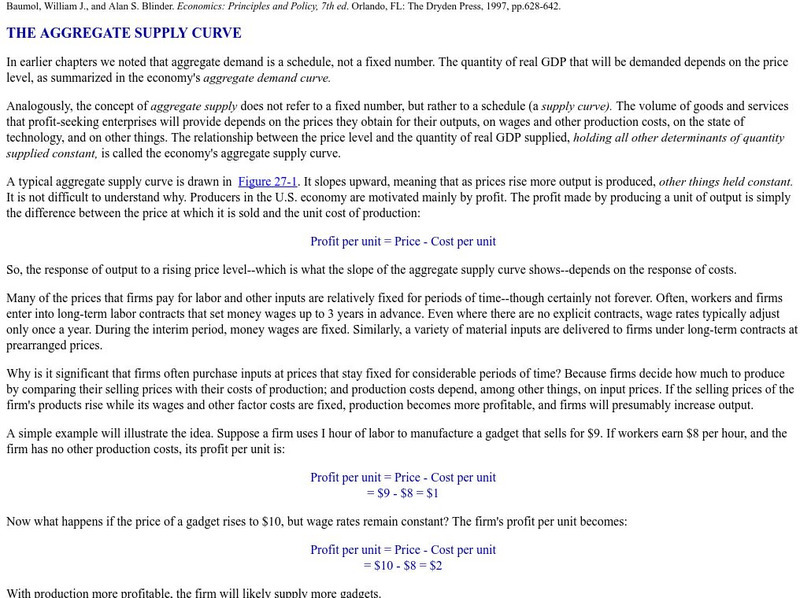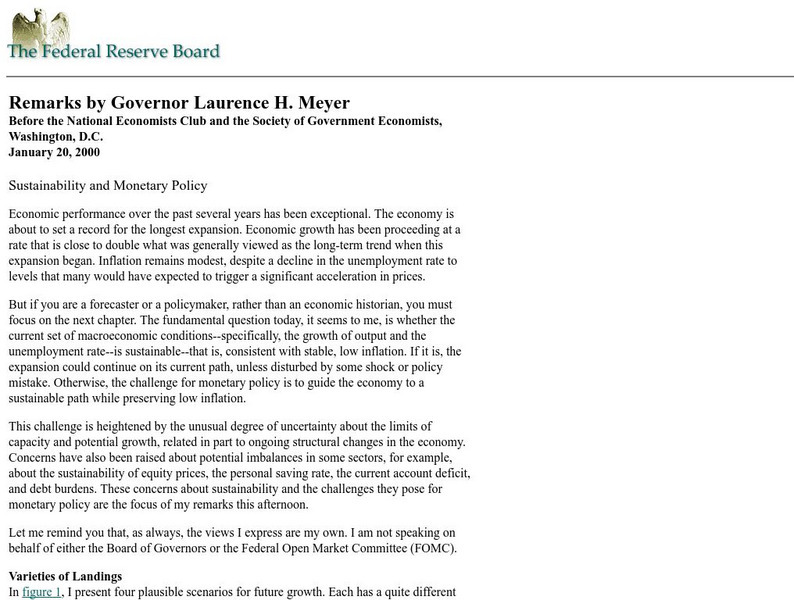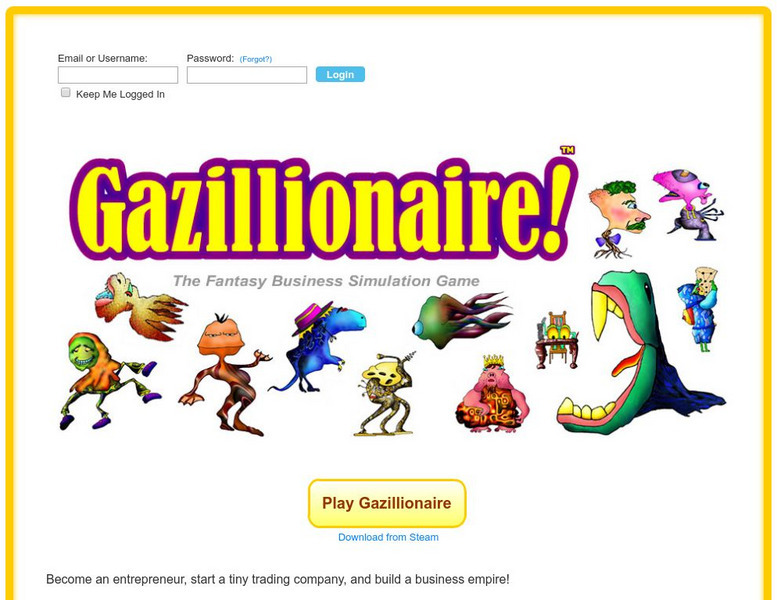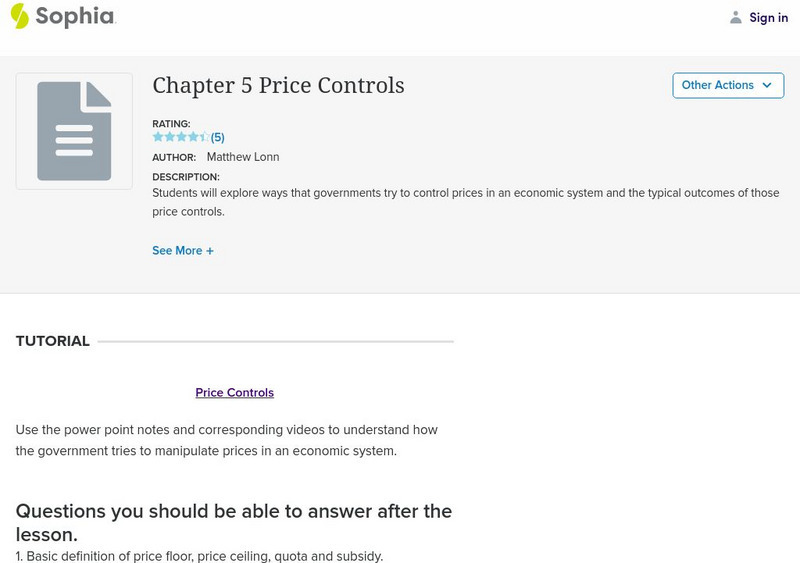Khan Academy
Khan Academy: Macroeconomic Perspectives on Demand and Supply
Read about the differing macroeconomic perspectives of Keynes and Say.
Texas Education Agency
Texas Gateway: 10: Keynes' Law and Say's Law in Aggregate Demand/supply Model
By the end of this section, you will be able to do the following: Identify the neoclassical zone, the intermediate zone, and the Keynesian zone in the AD/AS model and Use an AD/AS model as a diagnostic test to understand the current...
Council for Economic Education
Econ Ed Link: Henry Ford and the Model T: A Case Study in Productivity (Part 3)
Henry Ford's use of mass production strategies to manufacture the Model T revolutionized industrial manufacturing. This 3-part learning unit provides students with the story of Henry Ford and the Model T from an economics perspective....
Khan Academy
Khan Academy: Shifts in Aggregate Demand
Aggregate demand is made up of four components: consumption spending, investment spending, government spending, and spending on exports minus imports. Increasing or decreasing any of these components create shifts the AD curve.
Council for Economic Education
Econ Ed Link: Wages and Me
Students explore the reasons for differences in the wages for several occupations. Then students are guided through the Bureau of Labor Statistics website to find information about their potential careers and wage rates nationally and in...
Council for Economic Education
Econedlink: Markets and Prices
This video teaches the concept of Markets and Prices. A market refers to a group of buyers and sellers for a given good or service. The price is the amount of money needed to buy a particular good or service. The website contains an...
Council for Economic Education
Econ Ed Link: Traditional Economies and the Inuit
The Inuit people of northern Canada provide an example of a traditional economy. For thousands of years, Inuit parents have taught their children the survival skills needed to survive in the Arctic Circle's severe climate. Students will...
Texas Education Agency
Texas Gateway: Ch. 10: Aggregate Demand/supply Model: Key Terms
This is a list of terms and definitions used in Chapter 10: The Aggregate Demand/Aggregate Supply Model.
Other
South Western Learning: Aggregate Demand / Aggregate Supply
View the summaries of economic news stories related to Aggregate Demand and Aggregate Supply. Each story is accompanied by questions for students.
Council for Economic Education
Econ Ed Link: What Do People Want to Wear?
To stay in business, fashion merchandisers must be able to anticipate what consumers want. By looking at different retail websites, students will look to anticipate what consumers are demanding. Students will then go through the market...
Council for Economic Education
Econ Ed Link: Tapped Dry: How Do You Solve a Water Shortage?
Economists do not operate in a vacuum. If an economist is going to suggest that the price of a good needs to be increased, he or she needs to consider who will bear the increase in costs. Will the costs be distributed equally or will one...
Robert Schenk, PhD
St. Josephs College: More Price Elasticity
This site explains price elasticity of supply. Includes graphs to represent the concept.
Other
The Aggregate Supply Curve
"The Aggregate Supply Curve," by Baumol, William J., and Alan S. Blinder. Economics: Principles and Policy, 7th ed. Orlando, FL: The Dryden Press, 1997, pp.628-642.
Council for Economic Education
Econ Ed Link: How the Crusades Led to the Finding of the New World
The lesson will help students to discover the importance of the Crusades to the expansion of many European countries. Students will also be introduced to new products and find out why explorers were willing to risk all to locate new...
The Federal Reserve System
Federal Reserve Board: Sustainability and Monetary Policy
"Sustainability and Monetary Policy," Remarks by Governor Laurence H. Meyer before the National Economists Club and the Society of Government Economists, Washington, D.C., January 20, 2000. With links to graphics files in PDF format.
Other
Pure Capitalism and the Market System: The Market and the 5 Es
Learn the characteristics of a Market Economy, the state the four fundamental questions faced by any economic system. From an online textbook by Mark Healy of Harper College.
Council for Economic Education
Econ Ed Link: Deregulation and the California Utilities
"The verdict is in: California's experiment with energy deregulation is not just a mess; it's a certifiable failure, according to everyone from the state governor to the very utilities that initially backed the scheme." This is how...
Other
Gazillionaire
Play the game of business strategy. Wheel and deal to "determine where supply meets demand." Fun way to learn about the business world.
Utah Education Network
Uen: Grade 1 on Demand Opinion Writing Samples
This collection of opinion essays prompted first graders to write about a "best pet." From the Vermont Writing Collaborative, with Student Achievement Partners and CCSSO, these written pieces are part of the In-Common: Effective Writing...
Texas Education Agency
Texas Gateway: Chapter 4: Labor and Financial Markets: Problems
This section provides a list of six problems to solve pertaining to labor and financial markets.
Khan Academy
Khan Academy: Changes in the Market for Loanable Funds
Practice what you have learned about how changes in the supply and demand for loanable funds can impact interest rates in this seven-problem exercise.
Texas Education Agency
Texas Gateway: How Government Borrowing Affects Investment & the Trade Balance
By the end of this section, you will be able to do the following: Explain the national saving and investment identity in terms of demand and supply and Evaluate the role of budget surpluses and trade surpluses in national saving and...
Wikimedia
Wikipedia: Capitalism
Gives an overview of the hallmarks of capitalism. Includes a description along with history, characteristics, criticisms, and more.
Sophia Learning
Sophia: Price Controls
Lesson uses power point notes and related videos to help students understand ways that the government tries to control prices in an economic system, and what the expected results are.


















